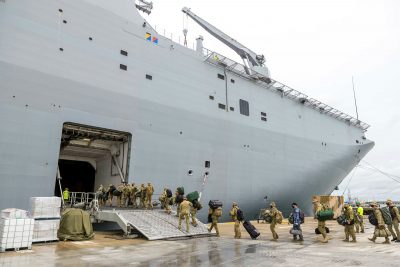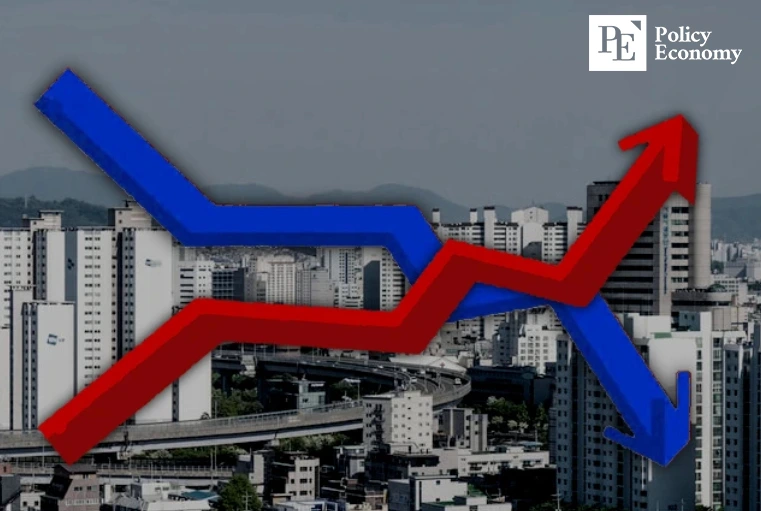[동아시아포럼] 호주와 인도-태평양 집단안보 체제
호주, 군사력 증강 통해 인도-태평양 지역 내 영향력 늘려가 중국, 남중국해 영토분쟁 등 위협 지속 글로벌 패권 경쟁 지속으로 갈등 상황 이어질 듯
[동아시아포럼]은 EAST ASIA FORUM에서 전하는 동아시아 정책 동향을 담았습니다. EAST ASIA FORUM은 오스트레일리아 국립대학교(Australia National University)의 크로퍼드 공공정책 학교(Crawford School of Public Policy) 산하의 공공정책과 관련된 정치, 경제, 비즈니스, 법률, 안보, 국제관계 및 사회에 대한 분석 및 연구를 위한 플랫폼입니다.
저희 폴리시코리아(The Policy Korea)와 영어 원문 공개 조건으로 콘텐츠 제휴가 진행 중입니다.
미-중 글로벌 패권 경쟁이 점차 심화되면서 인도-태평양 지역의 안보 환경이 점점 더 불안정해지고 있다. 미국이 이끄는 인도-태평양 집단 안보 체제의 핵심 국가 중 하나인 호주도 국방 전략에 대(對)중국 견제가 주요 과제로 떠오른 상황이다.
최신 국방 전략 리뷰(Defense Strategic Review)에서 호주는 ‘인도-태평양 집단 안보 체제’ 속의 호주 안보를 강조하면서 중국 견제에 협력하는 방식으로 태평양 지역 내 영향력을 확대하겠다는 방침을 밝히기도 했다.

호주 군사력 증강 박차, 중국의 적대적 인식 가능성
국제정치 전문가들은 ‘세력 균형(Balance of Power)‘ 관점에서 호주가 단독으로 중국을 저지하기 힘든만큼, 주변의 강대국과 연합 세력을 형성해야한다고 설명한다. 자국 안보 역량이 부족한 호주 정부는 집단 안보 시스템 안에서 한 축을 형성하기 위해 미사일 개발과 첨단 군사 장비 확보 등에 박차를 가하고 있다.
호주가 군사력 증강에 대규모 예산을 배정하게 된 것은 역내 중국의 역향력이 빠르게 확대되고 있기 때문이다. 중국은 지난 20여 년간 대(對)미 군사적 열위를 극복하기 위해 각종 기술 개발에 힘써 왔다. 군용 엔진 개발, 첨단무기 자체 공급 등의 핵심 목표 달성을 위해서는 국내 제조업 기반과 지역 공급망을 확충해 왔고, 방위물자 생산에서 유리한 고지를 선점하기 위해서 기술 및 경제 개발에 박차를 가했다.
그러나 최근 들어 강화된 미국 주도의 수출 통제와 인도-태평양 지역의 집단 동맹 전략이 중국의 최첨단 무기 자체 생산에 장애물로 작용하는 모습이다. 군수 지원 집중 등으로 중국의 군용 물자 생산 역량은 향상됐으나, 국방 기술 측면에서는 여전히 미국과 동맹국들이 우위를 점하고 있다.
중국, 대외 문제로 발생한 경기 위축에 역내 불만도 커지는 상태
중국이 대외적인 집단 안보 체제 구축으로 안보 위협을 받고 있는 것과 더불어 대내적으로는 경기 둔화가 가속화되면서 청년들이 일자리를 구하기 어려운 상태에 직면해 있다. 국제정치 전문가들은 초강대국이 경제적으로 쇠퇴할 때 국내 결속 강화를 위해 일반적으로 주변 국가에 대한 군사적 긴장감을 강화한다고 설명한다. 이 같은 논리에 따르면 중국의 향후 안보 정책은 글로벌 패권 경쟁 중인 경쟁국들과의 관계에 의해 좌우될 가능성이 높다. 특히 동아시아에서 일본의 군사력 증강 위협, 대만 해협 문제와 더불어 호주의 군사력 강화는 중국에 적대적 위협으로 인식될 가능성이 높은 상황이다.
중국과 주변국 사이의 남중국해 영토분쟁도 인도-태평양 지역 안보에 큰 영향을 미치고 있다. 미국의 국제정치 전문가 로버트 카플란의 저서 ‘아사아의 가마솥(Asia’s Cauldron)’에 따르면 중국은 남중국해를 영향력의 영역으로 인식하고 있으며 이 지역의 영토 분쟁을 자국의 안보에 대한 주요한 위협으로 여기고 있다. 최근 들어 인도-태평양 지역의 집단 안보 체제가 강화되면서 결국 중국은 남중국해 일대에 군사력을 강화할 수밖에 없는 상황에 직면한 것이다.
집단 안보 체제를 구축 중인 인도-태평양 국가들은 반대로 중국이 남중국해에서 매립한 인공섬들을 군사적으로 이용할 것에 대한 우려를 표명한다. 중국은 지난 2016년까지 남사군도 7개 해양 지형들에 인공섬을 건설하고 군사시설을 구축했다. 중국과 남중국해 영유권 분쟁을 벌이고 있는 필리핀, 인도네시아는 즉각적으로 반발했으나 중국이 최근 남중국해에 군함, 어선 등을 대거 파견 배치하면서 긴장감만 고조된 상태다. 7개 해양 지형 기반의 인공섬들은 인근 지역 국가들에게 즉각적인 위협이 되는 것에 그치지 않는다. 중국의 태평양 및 인도양 진출의 교두보가 될 수 있는 만큼 인도-태평양 집단 안보 체제 구성 국가 모두에게 군사적 위협인 상황이다.
남중국해 분쟁, 인도-태평양 지역 안보에 큰 위협
아울러 중국은 글로벌 주둔 기지 확대를 통해 동남아시아 등 중국 영토 밖에 군사력을 배치하려고 시도하고 있다. 일례로 지난 2022년 솔로몬 제도에 중국 해군 기지가 건설될 가능성이 알려지자 호주와 서방 국가들은 강한 우려를 표명했다. 중국이 태평양에 군대를 주둔하게 될 경우 미국과 일본으로부터 병력 지원을 받는 경로를 차단할 가능성이 높다는 이유에서다.
남중국해 영토분쟁이 가시화되는 가운데, 호주 내부에서는 미국의 군사적 개입 가능성에 대한 의구심도 감지된다. 중국과 직접적인 영토 분쟁을 겪고 있는 필리핀, 인도네시아에 대한 미국의 지원이 가시적으로 나타나지 않기 때문이다. 미국이 세계 2차대전에서 대(對)일 태평양 전쟁을 치렀던 것처럼 중국과의 전쟁에 나설 것이란 기대는 낮은 상황이다. 또한 미국의 전쟁 참여 가능성에 대한 의구심이 호주-미국 동맹 강화에서 얻는 이점을 상쇄한다는 주장도 나온다.
최근 호주-중국 간 관계 개선에도 군사력 증강은 계속될 듯
국제정치 전문가들은 남중국해에서의 군사적 충돌을 피하려면 중국을 포함한 모든 안보 이해당사자가 공통 분모를 갖고 대화에 나서야 한다는 점을 강조한다. 중국의 이른바 ‘회색지대 전략(grey-zone)’, 혹은 ’간 보기’ 또는 ‘점진적 기정사실화’ 전략에 대한 각국의 이해가 필요하다는 점도 지적된다.
최근 호주와 중국 정부 간의 관계 개선 노력에도 불구하고 인도-태평양 지역 내 미-중 갈등으로 양국의 대립은 계속될 것으로 보인다. 이런 상황에서 호주 정부의 군사 능력에 대한 불안감은 호주 방위 산업의 현대화를 촉진하고 있다.
호주의 새 노동당 정부는 미국·일본의 국방 및 협력 강화 약속에도 불구하고 중국과의 관계 정상화를 이뤄냈다고 자찬한다. 중국을 적대시하는 것을 원하지 않는 만큼 중국과의 관계 회복을 통해 호주 내의 군사력 증강 요구를 축소시키고, 중국에도 점진적인 군축을 요구하겠다는 방침이다. 그러나 관계자들은 호주만의 군축이 인도-태평양 일대의 긴장 고조를 되돌릴 수는 없다는 점을 강조하며 결국에는 국가 안보를 위해 군사력 강화에 나설 수밖에 없을 것으로 전망한다.
Australia and the new Indo-Pacific security architecture
The security environment in the Indo-Pacific has increasingly become volatile due to great power rivalry. Australia’s latest Defence Strategic Review affirms that the ‘defence of Australia lies in the collective security of the Indo-Pacific’. Canberra will be keen to sustain and enhance its role in the Indo-Pacific, particularly to balance China.
Australia’s current capabilities under the ‘balanced force’ model are insufficient to manage larger threats. For this reason, it is eager to pursue missile development and acquire advanced military equipment. The review is an important step in evaluating capabilities and charting a course to lead Australia towards a more prominent position in the regional security architecture.
Beijing may be too occupied with larger goals of self-sufficiency, for areas like military engine development, to match US capacities. China enjoys an advantage in defence production, with its manufacturing base and regional supply chains. But export controls and collective allied strategy can prevent it from acquiring sensitive technologies and assembling cutting-edge military hardware in the near future. While consolidation of logistics support has augmented its capabilities, China’s primary goal is advancement in defence technology, where the United States and its allies currently have an edge.
But an economic slowdown in China has led to its youth struggling for jobs. Some analyses find that the economic descent of a superpower causes domestic crackdowns — and greater military assertiveness in its neighbourhood. Chinese policy may be driven by insecurity and distrust of competitors on the world stage.
China’s posture may be compounded by the threat of Japan’s military buildup in East Asia, and its consequences for the Taiwan Strait in the coming years. In such a scenario, enhancement of Australia’s military power can also be perceived as a hostile threat, inviting adverse reactions.
In his book Asia’s Cauldron, Robert Kaplan observes that China perceives the South China Sea as its sphere of influence. Given the territorial disputes in the region, China remains anxious about its own security. It has increased military buildup to ‘project power’ in its immediate security ecosystem.
The biggest concern for Indo-Pacific countries may be military use of the island features reclaimed by China in the South China Sea. These facilities give Beijing an undue military advantage. This is not only concerning for Australia due to the volatile bilateral relationship, but also concerning for the Philippines and Indonesia, which are claimants in the dispute. The alleged incursions into disputed areas by Chinese fishing fleets, accompanied by military vessels, have aggravated tensions.
China’s exploration of foreign basing facilities indicates military power projection outside its domestic territories, including in Southeast Asia. The possibility of a Chinese naval base in the Solomon Islands rattled Australia and the West in 2022. China’s military presence in the Pacific can be problematic for two reasons: it will allow easy targeting of Australian territory and deny sea space to Australia. This effectively limits military support from the United States and Japan in dire situations.
Even as Canberra remains headstrong about its security interests and alignment with the United States, pockets of the Australian parliament have doubts about fighting an American war in the South China Sea. The recently released review talks of a ‘whole-of-nation’ approach, in a bid to improve Australian public confidence. Reservations about fighting an American war will be likely balanced by the benefits from the US alliance. This will mean continued support for the United States in areas like the South China Sea, although this may vary as domestic considerations are taken into account.
If an active military conflict in the South China Sea is to be averted, all security stakeholders —including China — must have a common denominator for discussions. This includes clear understanding of escalatory triggers induced by grey-zone tactics. This may be possible when Beijing opens up to concerted dialogue aimed at building trust, with Southeast Asian partners at the primary level and the United States and regional powers at a secondary level.
Despite some resilience in their bilateral relationship in 2023 as well as recent deliberations on trade, Australia and China will remain pitched against one another due to enduring US–China competition in the region. Insecurities around the gap in military capabilities fuel Australia’s drive to modernise its defence industry.
A notable achievement of the new Labor government is the normalisation in relations with China, despite a commitment to enhancing defence and strengthening cooperation with the United States and Japan. As Australia does not want to antagonise China, greater diplomacy with Beijing can pacify bellicose reactions to Australia’s improved military capabilities. Australia’s improved capabilities are essential to maintaining regional power status and defence against national security threats.



























